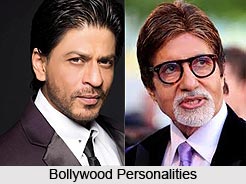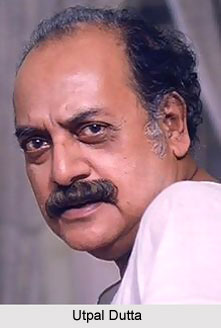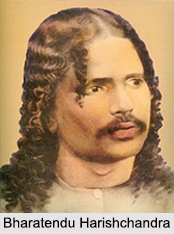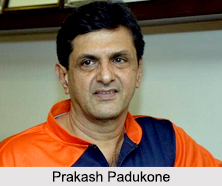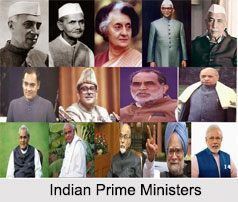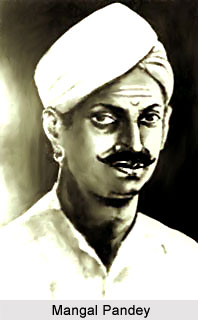 Calcutta during the passing months of 1857 was seething in fury to burst out against the oppressive rule of the British East India Company. The Company had done nothing advantageous for the common man. On the contrary, they were just being looted and pressurised for discipline. States like Oudh, Rajputana, Agra, Kanpur, Allahabad, Lucknow, Central India and various others, had risen up to revolt in unison. Calcutta was gradually becoming the pivotal point from where mutinous activities were being conducted. Mangal Pandey, the legendary freedom fighter from Barrackpore, included in the 34th Regiment of Bengal Native Infantry (BNI), had become the harbinger to every kind of mutinous conspiracies. He had hopes to receive assistance from the Patna group of Wahabis. Nakki Khan, Mangal`s trusted aid and childhood companion, had also come to brilliant use.
Calcutta during the passing months of 1857 was seething in fury to burst out against the oppressive rule of the British East India Company. The Company had done nothing advantageous for the common man. On the contrary, they were just being looted and pressurised for discipline. States like Oudh, Rajputana, Agra, Kanpur, Allahabad, Lucknow, Central India and various others, had risen up to revolt in unison. Calcutta was gradually becoming the pivotal point from where mutinous activities were being conducted. Mangal Pandey, the legendary freedom fighter from Barrackpore, included in the 34th Regiment of Bengal Native Infantry (BNI), had become the harbinger to every kind of mutinous conspiracies. He had hopes to receive assistance from the Patna group of Wahabis. Nakki Khan, Mangal`s trusted aid and childhood companion, had also come to brilliant use.
In fact, it was Nakki who had coaxed Mangal Pandey to become aware of his country`s condition, because, Mangal was busy with other trivial issues regarding his private life. Nakki had a more pressing task to describe to Mangal, regarding the meeting of secret Walliullah-ites (known to the British and more popular as the Wahabis) in Patna. Mangal Pandey however did not heed Nakki Khan`s advice.
Mangal Pandey, in the meantime, had become a member of the local Dharma Sabha and had promised not to get married till his duties had been performed. The mysterious Dharma Sabha, spoken off earlier by Major-General Hearsey during the Barrackpore insurgency, had no trace left in the fortified town. That there was a parallel organisation by that name is itself a mystery.
The Dharma Sabha was a Sanatani organisation and was staggeringly peasant in makeup and disposition. The involvement of the Bengal peasant in 1857 is a neglected field. After all, the province was unusually quiet throughout the rebellion with only East Bengal putting up some resistance. The reason behind Bengal`s silence might have links with Mangal Pandey`s story. Apparently Nakki Khan was a close member of the Dharma Sabha. Being a Muslim, he was given a special seat and his job was to act as a courier between the Sanatanis and the Walliullah-ites. He performed several odd jobs- including ferrying literature across borders, getting printed material from the Gangetic plain to Burdwan, Nadia and Murshidabad and keeping in touch with a certain Mukhopadhyay said to be the kingpin of Bengal revolutionaries.
Mukhopadhyay Babu had his quarters in Barrackpore. A former cook at the army cantonment which kept special Brahmin Maharajs (cooks) to prepare nutritious vegetarian diets for the sepoys, he had been discharged honourably somewhere around the early 1850s. Subsequently, he had opened a sweetmeat shop near the cantonment, which became famous. It also acquired a reputation for providing a safe haven to men on the run from the long arm of colonial law.
Nakki Khan introduced Mangal to Mukhopadhyay. Mangal was impressed by the cook`s eruditeness. The latter, in turn, spoke of a certain zamindar of Nadia who wanted to send money to the budding conspiracy in Calcutta and Patna.
The conspiracy element in 1857 is brought dramatically to light by Sitaram Bawa`s statement recorded on 18th January 1858:
The Sorapoor Rajah, the Satara Rajah, the Kolhapur Rajah, the Deshmook of Akulkote, the great Mooktian at Hyderabad were a band of ousted Maharajas waiting in unison to pounce upon the approaching British encroachments. The Mysore Rajah used to promise these people that with the help of the Almighty, all would turn well. A great army was coming their way, to redeem them from such perils. Baji Row`s (Baji Rao) son and Holkar and other great princes had all linked together and as soon as they advanced, all would join to make a full circle. The old dynasties would then be restored and all would be restored on their thrones.
The Baija Bhaiee (Baji Rao II) was the person who first commenced this conspiracy approximately twenty years ago. During that time he was taken from Gwalior and kept in Nasik.
Then, Bajee Rao (Baji Rao II) breathed his last at Bithoor. He left a widow and an adopted son named Nana Sahib. Nana Sahib is always described as a worthless and foolish fellow, who never would become anything, but for the tuition of his Gooroo (Guru, as in a spiritual teacher), Dassa Bawa (said to have come from a place called Kalee Dhar, beyond Kangra, on the other side of Jummoo (Jammu)). Three years ago, or perhaps a month less, Nana Sahab (Nana Sahib) gave the Gooroo a sunnud, granting a five lakh jaghir and nachatras. Dassa Bawa had told him that he would become as powerful as the Peishwa (Peshwa Baji Rao II) had once been. The sunnud was to take effect when he (Nana Sahib) would come to power. Dassa Bawa then made a Hunooman (Lord Hanuman) horoscope of eight angles. Nana, after seven days of prayer, went to sleep on the horoscope. Hunooman (Lord Hanuman) having revealed to him that he would be victorious, he felt that the truth of the prediction had been confirmed and at once presented Dassa Bawa with twenty five thousand rupees worth of jewels. Dassa Baba then started for Nepaul (Nepal).
Each of these happenings was communicated by Nana Sahib to Baija Bhaiee (Baji Rao II) and to all other states. The states included Holkar territory, Scindia territory, Assam, Jeypoor (Jaipur), Joudhpoor (Jodhpur), Kolah Boonder, Jhalawar-Rewah, Baroda-Kutch-Bhooj-Nagpur, the Ghonds of Chanda, Hyderabad, Soorapoor, Kolapoor (Kolapur), Satara, Indore. In fact, he did not exclude any place where there resided any native prince. Nana Sahib wrote to all. The Rajah of Travancore however was the only one who did not agree to these conspiracies at all.
Nana Sahib wrote these letters approximately three years ago at intervals, a short time, perhaps two to three months prior to the annexation of Oudh. But at first he received no answers. After the annexation he wrote still more and then the Soukars of Lucknow joined in his views. Maun Singh, who is the chief of the Poorbeah, or Poordusee joined Nana Sahib`s endeavours to the conspiracy. Then the sepoys began to make tajwez (plans) among themselves and the Lucknow Soukars supported them. Until Oudh was annexed, Nana Sahib did not receive answers from anyone. But when the incident occurred, many began to take courage and answer him. The plot among the sepoys first took place regarding the discontent about the greased cartridge. Then, to everybody`s delight, answers began to pour in to the Nana. Golab Singh of Jummoo (Jammu) was the first to send an answer. He said that he was ready to blast forth with men, money and arms. He was successful to transfer money to Nana Sahib, through one of the Lucknow Soukars (Sahukars).
Here two facts are important. Sitaram Bawa gives the names of many princes, like Scindia and Golab Singh of Jammu who eventually helped the British put down the uprising. Then Bawa lists Nana Sahib and his guru as the chief brains behind the plot to overthrow the British. Then of course, he mentions the role of Lucknow sahukars.
Sahukars were not Banias or traditional traders. They constituted the last remnant of the Indian capital. The banias were industrious, having invested in the industries that closed down following the East India Company`s change of policy. They were thus an aggrieved bourgeois element so crucial in anti-colonial rebellions.
Sitaram Bawa further goes on to mention how the sepoys were organised and that everything was under control of Dassa Bawa and the latter was a hundred and twenty-five years old.
The zamindar of Nadia, Mukhopadhyay`s contact, later recruited by Nakki Khan in the Calcutta-Patna conspiracy had promised assistance of men, money and arms and a further mobilisation of Bengal zamindars. An army was supposed to march from Nadia, Burdwan and Birbhum to Calcutta. Sitaram Bawa himself states that the original plot was to start the disturbances in Benaras and then move towards the Patna-Calcutta route.
Nakki Khan was also in touch with the Walliullah-ite Patna group. This was a large underground organisation stretching from Munger to Arah and Jagdishpur. The two latter centres were synonymous with Kunwar Singh, the fiery Rajput leader, a great follower of composite culture and a Sanatan Dharmi, the leader of Hindus and Muslims of western Bihar. Earlier Kunwar Singh was involved in a suspected conspiracy during the Sikh wars. In fact, contrary to popular perceptions, the Hindustani sepoys were not that anxious to conquer Punjab for the British. Reports about their hesitations are widespread.
Kunwar Singh was in correspondence with Sikh leaders through Peer Ali, the leading Walliullah-ite of Patna. It also known that Nakki Khan and Peer Ali had met Teja Singh, a Sikh fakir in Amritsar. Teja was part of the conspiracy. He had a force of Sikh daredevils who were in contact with Pathans of Hazara. Teja Singh was one of the leaders. The British were to hang Peer Ali and Teja Singh later. Nakki Khan was in touch with Walliullah-ites. The chain thus formed reveals Mangal Pandey as an important link.
Bihar perhaps was to prove the rallying point, a major theatre of war and destruction between Benaras and Calcutta. Nakki Khan, at one point, was found talking to sepoys at Bhagalpur and Hazaribagh, scenes of future Bihar- Jharkhand mutinies. Bihar leaders of the rebellion pondered over the issue of marching over to Calcutta. There was a serious move to foment an uprising in Purulia on the Bihar-Bengal border.
Patna, also called Azimabad was a sturdy, sloped city of caravan and British buildings were built in the Greek style with huge Doric columns. Bihar had come under the British Diwani earlier right after the Battle of Buxar (1764). Permanent Settlement Act of 1793 was implemented here as well, but the old aristocracy was not uprooted. Many fief holders of Mughal times were confirmed as zamindars. In Bengal, the British had to uproot support for the Indo-Mughal polity and way of life. They also had to kill off the industry. It was necessary therefore to create a new and pliant nobility. In Bihar, where the emphasis was on tapping the rich minerals of Jharkhand and the revenues from the central and northern parts, the old aristocracy was largely kept intact.
People like Nakki Khan and Peer Ali had a tough time in Bihar. Kunwar Singh was a rare phenomenon-the aristocracy in general was not very supportive. Even the Muslims were wary. Initially the main Maulavis did not support either Nakki or Peer.
Walliullah-ism (known to the British as Wahabism) was dubbed too radical, pro-peasant and anti-landlord for their tastes. Nakki and Peer Ali had to take recourse to coercive measures. A small force, composed mainly of petty bourgeois Muslim youths and shop-keepers, was engaged in the collection of arms. After dusk when Patna alleys exuded the smell of garbage, scent and sweat and the greenish-blue Bihari hue of the Magadhan landscape, the Walliullah-ite armed task force went about knocking doors and sounding Maulavis. Sword in hand, the youth told the religious leaders calmly that India was going to face an armed revolution, which was going to restore the king of Delhi. The Maulavis had a choice- they could either die then and there or enroll with the Walliullah-ites. Nakki Khan informed Mangal Pandey about the Patna conspiracy developments.
Indeed in both Bihar and Bengal, British policies had assured that the upper classes remain clear of link with revolutionaries. These forces had an obvious stake in the maintenance of colonial rule. The British did not create inferior clients or subjugated brokers. They made new partners to the colonial enterprise. The English made sure that any anti-colonial uprising would inevitably take on the contours of an Asian class struggle.
